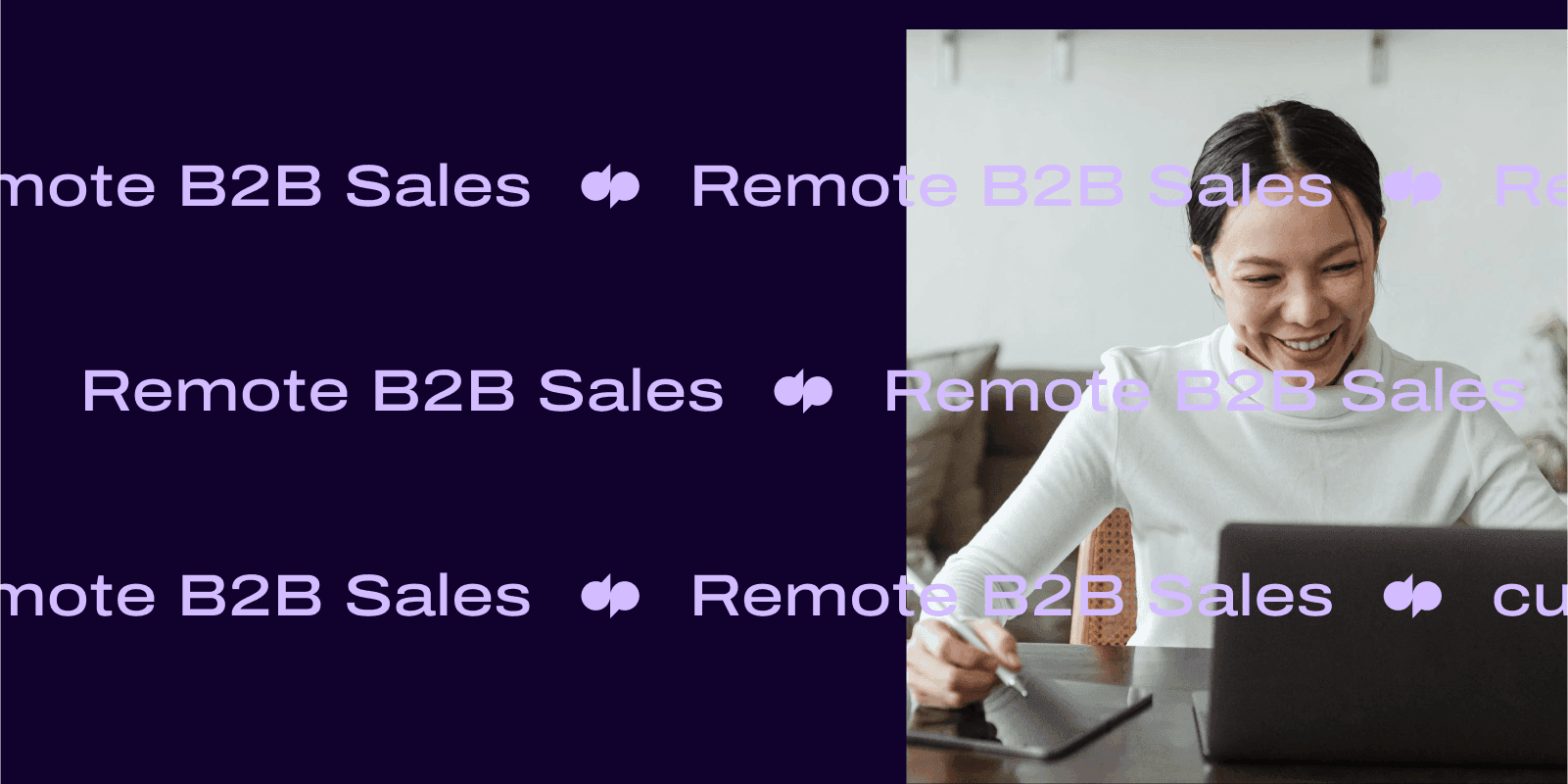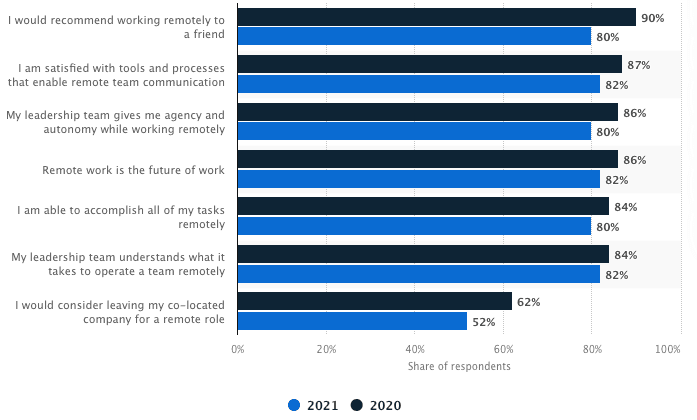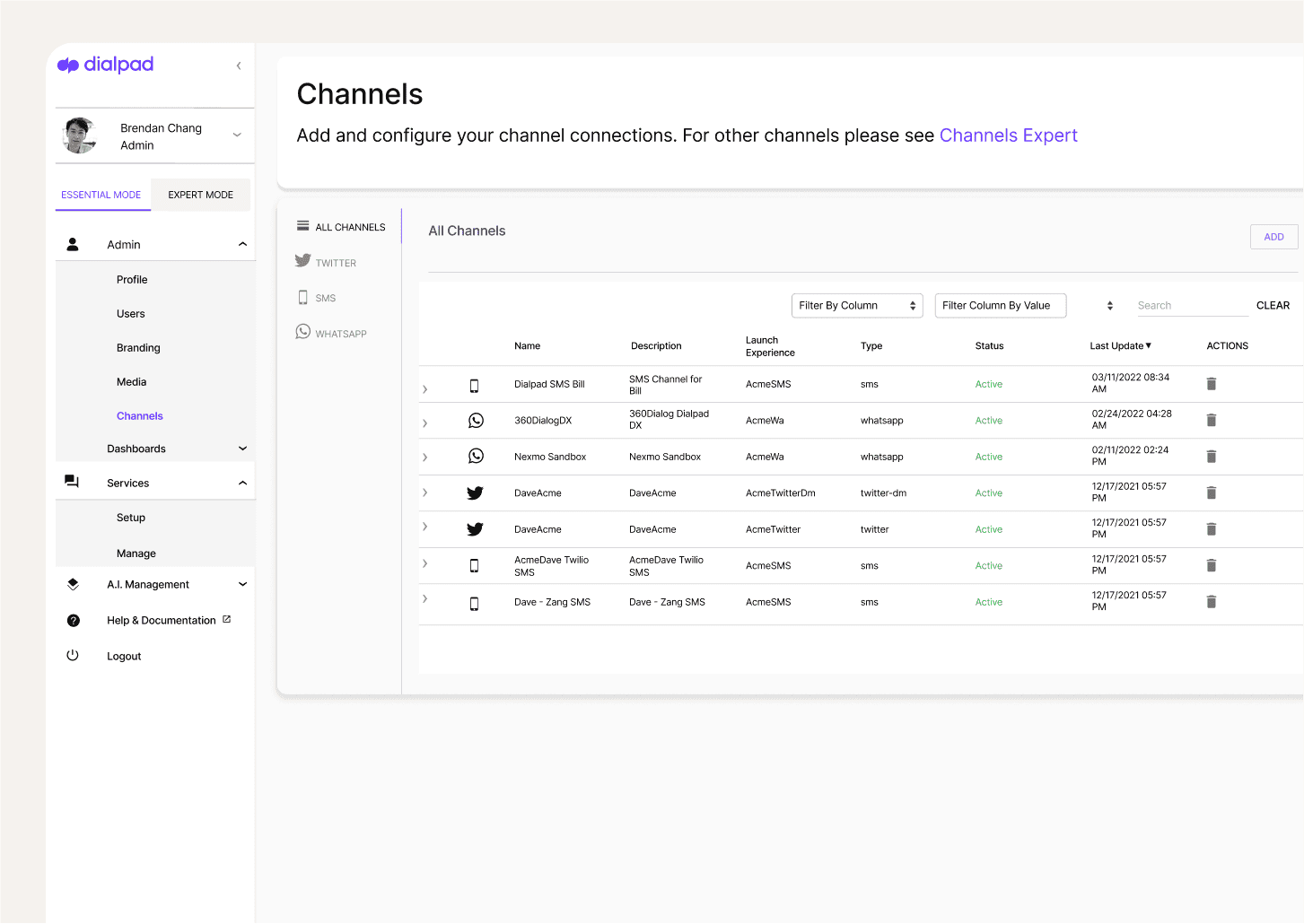10 tips for managing remote B2B sales

Content Marketing Specialist at CIENCE

Tags
Share
It all started a couple of years ago when the pandemic came along and we had to restructure our lives and jobs around it. While working from the office used to be a must, modern companies were set to discover new digital opportunities. Many different teams within a company were affected, sales being one of them. A sales job has never been an easy one due to its demanding environment, fast-paced changes, and fierce competition. To be in sales means being resilient, having a positive attitude, and being ready to overcome challenges. A sudden change to remote selling added a bit of stress on top of the existing problems, not because salespeople weren't ready but because management wasn’t prepared. There were problems with training, being online full-time, and even changing how companies approach their value proposition and pitch. Now, as some companies are making a return to the office, many are sticking to remote selling as it continues to take prominence in an ever-evolving industry. In this post, we’ll dig deeper into:
What is remote selling?
Remote (virtual) sales is a term used to describe what a sales team does in a fully remote environment. This means no common office space or face-to-face meetings — sales reps can work from anywhere in the world. Unlike hybrid sales, where you can work from home or the office, it’s an all-remote selling world that’s rapidly replacing this model.
Remote sales jobs include everything from entry-level jobs like sales development representatives (SDRs) and sales calling support, middle-level sales engineers, customer success managers, and account managers, up to senior sales managers and account executives. These range from part-time to full-time opportunities.
Although remote sales jobs seem to stand in a different category from on-site ones, these are essentially the same. And now, recruiters are looking for sales professionals to set up, handle, and manage sales across a variety of industries, from healthcare to SaaS startups.
According to a Statista survey in 2020, 62% of respondents said they would consider leaving their company for a fully remote role. With so many possibilities, it’s not a surprise that workers are looking for remote options that offer the same opportunities as in-house jobs.

What are the benefits of remote B2B sales?
There are many benefits of remote sales, including the built-in flexibility and scalability that comes with a virtual team. While many sales specialists moved to remote sales jobs because of the pandemic, others have chosen to stay because of the value it brings to businesses and employees:
It’s cheaper. Office life is expensive, especially if you have a large group of sales reps that is constantly growing. The rent, office supplies, travel expenses, maintenance costs, etc., can be distributed somewhere else — like new automation software or better sales tools.
It’s accessible. Gathering a remote sales team gives you an opportunity to seek talent all over the world and find people that are a perfect match for your business.
It’s comfy. Another benefit for sales reps is the ability to work from the comfort of their own home: no need to experience traffic every day, get to the office in bad weather, or change from your pajama bottoms (although we recommend doing that once in a while). The ability to work from home can often ignite sales productivity and ultimately boost sales performance.
What are the challenges of remote B2B sales?
However, a shift to a remote sales environment brings many challenges for sales teams. Here are a few of the obstacles of remote work you’ll need to overcome:
Inability to unplug. Some sales reps feel pressured by their companies or colleagues to be accessible and responsive all the time, which throws work-life balance out of the window.
Lack of communication. It’s easy to get disconnected from your peers when you don’t actually meet in the hallways or work in the same room. Feeling isolated can lead to lower productivity and job satisfaction.
Lack of support. Again, no team meetings or face-to-face celebrations of new accomplishments can get your workers down and make them feel like they are doing a meaningless job. In fact, acknowledgment of one's achievements by colleagues or senior staff is known to be one of the top three most motivating parts of an SDR job.
10 best practices for remote selling
To help prevent some possible challenges from arising, we’ve gathered ten best practices to help you manage a remote sales team and keep them on top of their game:
1. Provide high-quality data
One of the biggest challenges in business development is spending hours working on a lead that will never become a customer for various reasons: wrong person, wrong sales funnel stage, not enough data or time to personalize, or just a broken data record. So no matter what sales model you have (on-site, remote, or hybrid), high-quality data is absolutely crucial for your success. How do you get good data? You can research it yourself (time- and money-consuming), buy a lead list (authenticity of the data is not guaranteed), or outsource it to an experienced data provider to find fresh leads that fit your specific needs. No matter which way you go, your data must be clear, fresh, goal-oriented, based on your buyer persona (BP) and ideal customer (ICP), and constantly updated. These strict requirements will ensure your salespeople will spend less time on the wrong prospects and gain more time on finding the right customers.
2. Establish clear communication channels
Since dropping by a manager’s office and asking a question is not really an option in a remote workspace, there should still be “places” where your team can go. First, you have to have an accessible and easy-to-navigate online messaging tool. This should be a place where your workers can address some issues that don’t need a long discussion. If a topic needs brainstorming, it’s better to have a call through video conferencing platforms like Dialpad Meetings.

To avoid miscommunications, set up regular virtual meetings that take place weekly or biweekly to discuss the current state of affairs. Depending on the size of the team, you can also have a 1:1 meeting with every individual team member to analyze results, roleplay sales calls, set the goals, give feedback, or just chat about life—such an approach will make your employees feel seen and will reduce the risk of burnout.
3. Invest in automation
As we've already mentioned, automation tools are vital to tackle communication problems, but automation, in general, is meant to make our lives easier. Start with a customer relationship management software (CRM) that guarantees the security of the company data and sales interactions. It tracks every communication with a prospect, schedules messages for a certain time and day, prioritizes tasks, and integrates with your other tools.
There are well-known providers like HubSpot or Salesforce, both of which integrate with Dialpad to help streamline your communication tools and customer information. Depending on your size and needs, you could consider other options.
Besides CRM software, a salesperson needs a good dialer. Dialpad’s integration with Salesforce gives you access to a power dialer, which is a tool that helps the automation of a cold calling process. Basically, it starts calling the next prospect the minute you hang up the phone with a current one, saving your salespeople the trouble of dialing.

Every modern remote sales team is using one, and if you don’t, it’s your sign to get one.
4. Pursue omnichannel outreach
Sometimes we forget that when sales went remote, our customers also did. And while you’ve probably heard of multichannel outreach (reaching out to customers via multiple channels centered on the service you’re providing) there’s also the omnichannel customer experience (reaching out via multiple channels centered on the customer) which seems to be the hit in new sales.

According to a McKinsey study, on average, decision-makers used five different channels throughout their buyer journey in 2016. In December 2021, this number doubled.
The study also found that as of December 2021, more than 90% of B2B sales organizations viewed today’s B2B omnichannel reality as equally or more effective in reaching and serving customers than before COVID-19.
This supports the claim that client-focused sales are prospering, and this may be a sign to strengthen the alignment between sales and marketing and to also shift your marketing messages from “how good our service is” to “how much we can help you.”
5. Hire the right people
Despite all the recruiting tips available out there, building any team takes lots different skills and experiences, and even more so when it comes to remote sales.
Here are some questions you’ll want to ask in an interview to determine if your candidate is the right fit for your remote team:
Why are you interested in sales?
What’s your ideal work environment?
How do you define your efficiency working from home?
Name a challenge that you’ve recently overcome.
How comfortable are you selling virtually?
Do you enjoy talking to people?
How do you organize your day?
The people you hire should have a positive mindset, a desire to grow and constantly develop, and a genuine interest in sales. After that, it would be easier for them to sail through onboarding and into the prospecting.
6. Adjust goals and sales quotas
According to TOPO’s Sales Development Benchmark Report, only 48% of SDRs consistently reach their targets. What we can conclude from this is that sales quotas levels are unrealistically high. Unreachable sales quotas can kill motivation and make your workers overstressed.
Analyze your company’s performance so far, compare it to your goals, and find a number that will bring both results for you and motivate your employees to reach new heights. Be sure to find metrics to track that as well so that you see the mechanics behind a sale and recognize your people’s hard work. Sometimes, managers forget about providing ongoing sales training on topics like personalization, research, outreach, and following up. For sales call training, this can be done in Dialpad in several ways — one of which is to create call playlist.
Let’s say your agents are having difficulty selling to medium-sized businesses. You review and identify a few exemplary calls by your team that successfully sold to these types of businesses. Then, add the calls into a playlist and share them with your team to review and learn from.

7. Maintain work-life balance
The inability to unplug is one of the most prominent challenges workers face in remote sales. Although sometimes it’s a personal issue (anxiety, inability to rest), oftentimes, it comes from within the organization. You should encourage your employees to build new routines and habits that will help them handle working remotely. If your company can afford flexibility, support them to find a workflow that fits their life and brings in the most efficiency. And most importantly, show them by your example that rest is important for productivity and prevention of burnout.
8. Provide the basics for success
Based on Maslow's hierarchy of needs, basics like food and safety should be covered first before going into any personal development.
The same concept can apply to remote sales — you should provide your team with “the basics” like computers and chairs (if they need it) to ensure comfortable working conditions when working from home, invest in sales tools (as mentioned earlier), and team training to help them improve.
9. Provide consistent coaching
A continuous learning experience is what makes sales so interesting—there’s always something new to discover. Whether you’re the one providing sales coaching to your team or having team members coach each other, it’s important to constantly share your learnings, encourage brainstorming new ideas, and collaborate to create something new and exciting.
10. Build great relationships
You don’t want your employees to feel lonely or isolated, so you have to invest in remote team building and activities that can strengthen relationships. Virtual coffee breaks or online meetings to play games can be a great way for teams to get to know each other better. Aside from that, being kind and understanding with your team will empower them to be the best version of themselves.
Use remote B2B sales for your success
When the pandemic just started, some thought that a remote sales environment was just a way to adapt and conquer that obstacle. Now, we see that remote selling is definitely here to stay. While a transition from the office to work from home may seem daunting, it’s just a matter of time before you’ll make it beneficial for your business. Be open to change, listen to the feedback of your employees, adapt as you go along, and use our remote sales management tips to make the adjustment smoother.
Top remote B2B sales teams use Dialpad
Dialpad helps salespeople improve how they communicate with potential customers and close more deals. Book a demo to see how it works, or take an interactive tour of the app on your own first!








